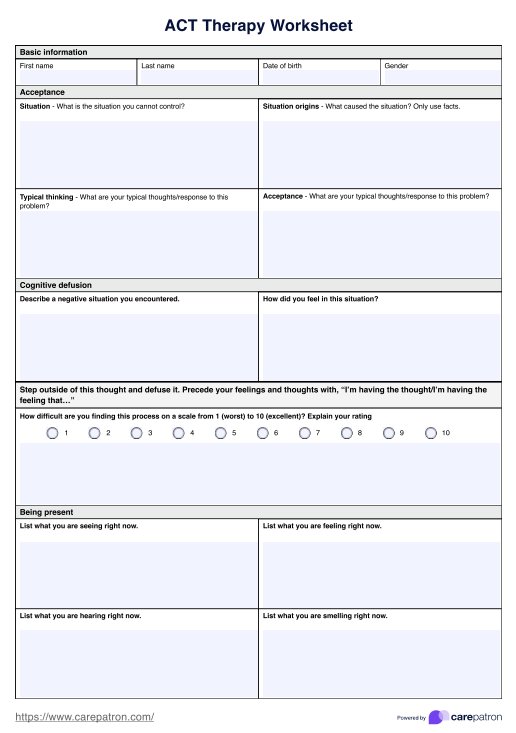ACT therapy worksheets are completed by the client. If you choose to work on them during your sessions, keep in mind that it is not you driving the worksheet, rather, it is still your client. You should not add any information, and should only be transcribing the thoughts and feelings of your client.

ACT Therapy Worksheet
Check out our ACT Therapy worksheets to produce high-quality psychological outcomes. Encourage greater mindfulness, acceptance, self-awareness, and understanding.
ACT Therapy Worksheet Template
Commonly asked questions
ACT treatment, like narrative therapy, includes the cognitive defusion part, in which a person is detached from their situation. Both strategies enable clients to reduce the weight of their problems and externalize order in order to deal with them more effectively. Narrative therapy stresses a storyline approach, whereas cognitive defusion is more 'bare bones' and uses simple reframing. ACT therapy worksheets in general focus on various dimensions such as values and acceptance, whereas story therapy is a single lens used to treat clients with mental health concerns.
It is not required for the client to complete all parts of the ACT therapy worksheet, especially if you deem some aspects as irrelevant. However, as a mental health professional, it is up to you whether you enforce this or not. It is recommended that the client completes the entirety of the ACT therapy worksheet in order to receive the most benefit and highest value.
EHR and practice management software
Get started for free
*No credit card required
Free
$0/usd
Unlimited clients
Telehealth
1GB of storage
Client portal text
Automated billing and online payments











